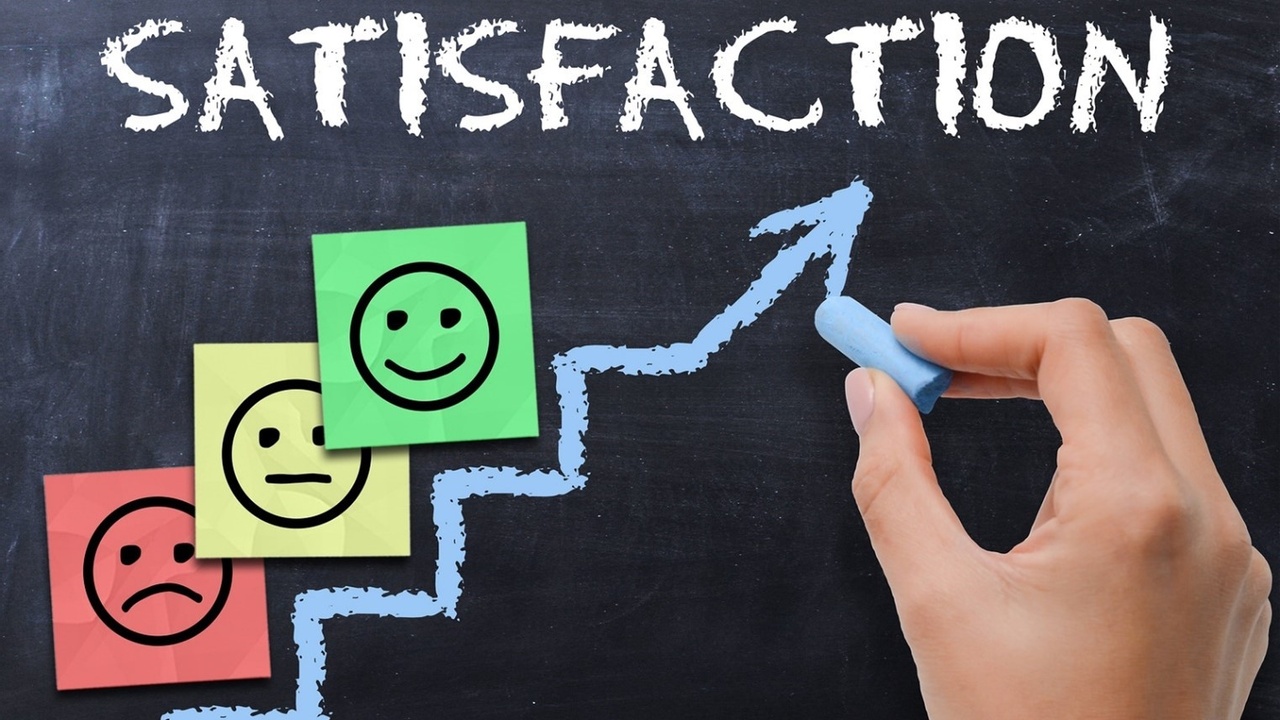Are your Customers Happy? How to Measure Customer Satisfaction in your Business (Part I)

One of many key requirements keeping your company profitable is satisfied, repeat customers who spread the word about your business.
It is no secret that some of the world's most successful and trusted brands – Amazon, Apple, Chick-fil-A, Hilton – are known for their “customer-obsessed” approach and put the satisfaction of their customers front and center.
Over 100 years ago, Harry Gordon Selfridge, an American-British retail magnate who founded the London-based department store Selfridges, summed up the importance of flawless customer service when he reportedly said, “the customer is always right”.
Sam Walton, Founder of Walmart, stated that “there is only one boss, the customer, and he can fire everybody in the company from the chairman on down, simply by spending his money somewhere else.”
The knowledge that customers have all the power has been around for a long time. With the ability to reach people anywhere in many different formats, businesses are turning their focus on increasing their customer satisfaction levels. So how can you measure the satisfaction of your customers with your company and improve your products and services?
What does Customer Satisfaction really mean?
In marketing terms, customer satisfaction is the result of a process in which the customer compares the perceived performance of a product or service, the actual performance, and his or her subjective expectations. The long-term goal of every company is to exceed customer expectations in order to attract enthusiastic and loyal customers.
Why is Customer Satisfaction Important?
When clients and customers leave satisfied, you build long-term relationships that are good for profits and future business development. Additionally, happy customers are great brand ambassadors, writing positive reviews, telling friends and acquaintances, and showcasing your products and services. This is worth more than expensive marketing, endorsements, and partnerships.
Numerous surveys conducted by Inc Magazine show that you only have one chance to convince customers that your products and services are worth buying. When dissatisfied, customers simply leave your store and will never enter it again, or will stop buying your products. Even worse, they can amplify their negative experience by telling others about it and discouraging them from becoming customers.
Happy customers, on the other hand, are less price-sensitive and are willing to “forgive” any discrepancies on the customer journey and “accept” increases in your product's price.
Therefore, it is easy to see that a large part of your business success stands or falls within customer satisfaction. Not to mention that it is more expensive to win new customers through advertising, campaigns, and other promotional methods than to turn existing customers into loyal buyers and brand ambassadors.

How to measure your Customers’ Satisfaction?
If you are looking to find out whether your customers are happy with your products and services, or how you can elevate their positive experiences with your brand, here are some of the most efficient tools and methods that you can you use to measure customer satisfaction.
A good place to start is to ask yourself what the goal of your measurement is?
- Do you want to find out your customers’ experience with your company as a whole or their views on certain products or services?
- How often are you going to measure your customer satisfaction data?
- How much are you willing to spend in order to collect and analyze that data?
Once you answer these questions, you can choose a suitable instrument for measurement.
Surveys
Consumers are constantly asked to respond to surveys and provide data for products they purchase, services use, or contact with the customer support team. You want to get information directly from consumers. Corporations pay thousands of dollars gather customer data from third-party sources because the consumer’s opinion now matters more than ever.
You should regularly seek feedback from your customers via a review on the internet, a personal conversation in the store, or with the help of a customer questionnaire. It is critical to encourage your customers to express honest opinions and constructive criticism. Especially in direct conversations, customers often hesitate to openly express their opinion, so you should make it clear to them that the feedback is used to better adapt your products or service to their needs.
For online surveys, you can use tools like SurveyMonkey, Qualtrics, HubSpot, or Google Forms, which are mostly free. The most common way to reach consumers and ask them to complete questionnaires is via email, in-app, phone call, typical personal (face-to-face) interviews, telephone surveys, or focus groups.

Social Media
Social media platforms such as Facebook, LinkedIn, or Instagram offer good opportunities to find customers' opinions about your products. Through social platforms, relationships between companies and their customers are becoming more personal, direct, and natural. However, a bad experience of a consumer may reach a significantly larger audience. That is why you should monitor social networks with a focus on customer satisfaction.
External services are commonly used to find out whether and how the name of your company is mentioned on social media. Tools such as Crimson Hexagon, Mention.com, Google Alerts or HubSpot, offer what is called “social media monitoring” (also known as “auditing” or “listening”). These tools track search terms or mentions of your company’s name, create reports, and analyze data. Moreover, many social media channels today have integrated analytics for businesses to make the behavior of visitors and subscribers transparent.
Social media audits can be free, but on average they cost between $300-$10,000 depending on your business. According to Hootsuite, the vast majority of big corporations in the US spend over $10,000 for a single social media audit – and they perform at least 12 per year.

Key Performance Indicators
Customer Satisfaction Score (CSAT) is a well-known tool for measuring customer satisfaction, which is a performance metric that expresses the level of customer satisfaction in percentages and is calculated based on the average customer rating that a company receives.
CSAT is particularly easy to use and is widely employed by many businesses that have a diverse customer base, as it forces participants to commit to a specific position on the scale. The numerical figures represent different degrees of satisfaction between poles of “very dissatisfied” and “very satisfied”.
The process is simple: send a form to clients and customers via email which takes about 2-3 minutes to complete. With this method, customers use a scale – usually from 1 to 5 – to evaluate various services of a company, giving an overview of the overall performance in various areas.
Other popular methods for measuring customer satisfaction include the Net Promoter Score (NPS) which measures customer loyalty and Customer Effort Score (CES) which measures customers' understanding and interactions with your brand versus competitors’ brands.
Finally, the analysis of the complaints you receive can help identify problems in your products or services not previously understood and find effective solutions.

Customer Satisfaction when Selling your Business
Maintaining high levels of customer satisfaction is important when running a business and also when you sell it. Buyers want to understand customers' thoughts about the business, how they interact with staff, and how they perceive your products' value. Experienced buyers want to see high customer satisfaction and strong professional relationships not just in terms of sales, but also through reports, surveys, and key performance indicators. Getting ahead of the questions using the measurement tools above is critical to a successful corporation transaction.
Buyers want to “buy” and retain your loyal clients. They do not want to lose your customer base after the change of ownership and they certainly want to maintain the positive perception created by your company over the years. Low levels of customer satisfaction, bad reviews, and complaints will turn buyers away or will make them devalue your business.
So, if you have already gone through the process of measuring your customer satisfaction, you can prove to buyers that your customers are happy. This will help increase the value buyers put on your business. After all, you want to reassure the buyer that the transaction will not “shake” the success of your company and the great relationships developed with your customers, which is ultimately what generates sales and revenue.
The Bottom Line
In order to operate successfully on the market in the long term, it is essential to focus on the customer and work to exceed their expectations, build trust, and develop loyalty. The more customer data you collect, the more meaningful the results will be.
It is also important to remember that in order to keep customer satisfaction levels high, you have to gather feedback frequently and see if satisfaction changes over time. Companies that regularly measure customer satisfaction adapt their products to meet the needs of the market. This is a powerful and decisive competitive advantage.
Next time on the Growth To Exit Blog, we will talk about methods and techniques to increase customer satisfaction levels after measuring them. Do not forget to check out our podcast episode with Kris Elliot, COO at Expansive Workplace, where she gives top advice on developing and maintaining innovative and quality customer experiences.
Listen for free on LIKE IT'S YOUR JOB.



